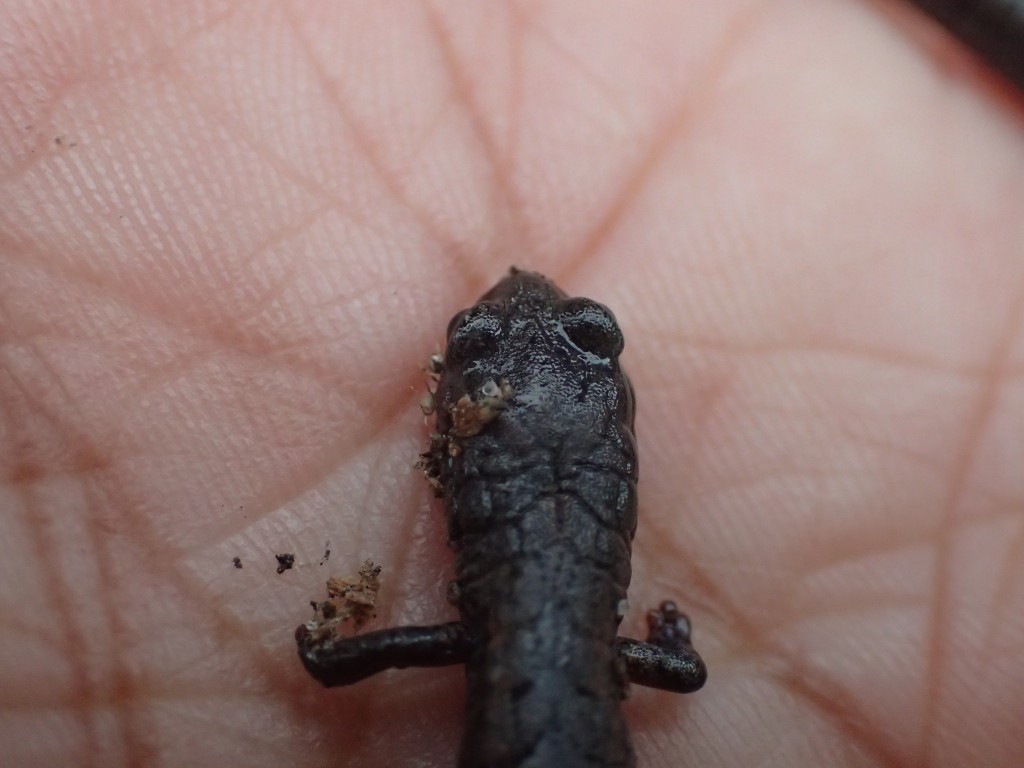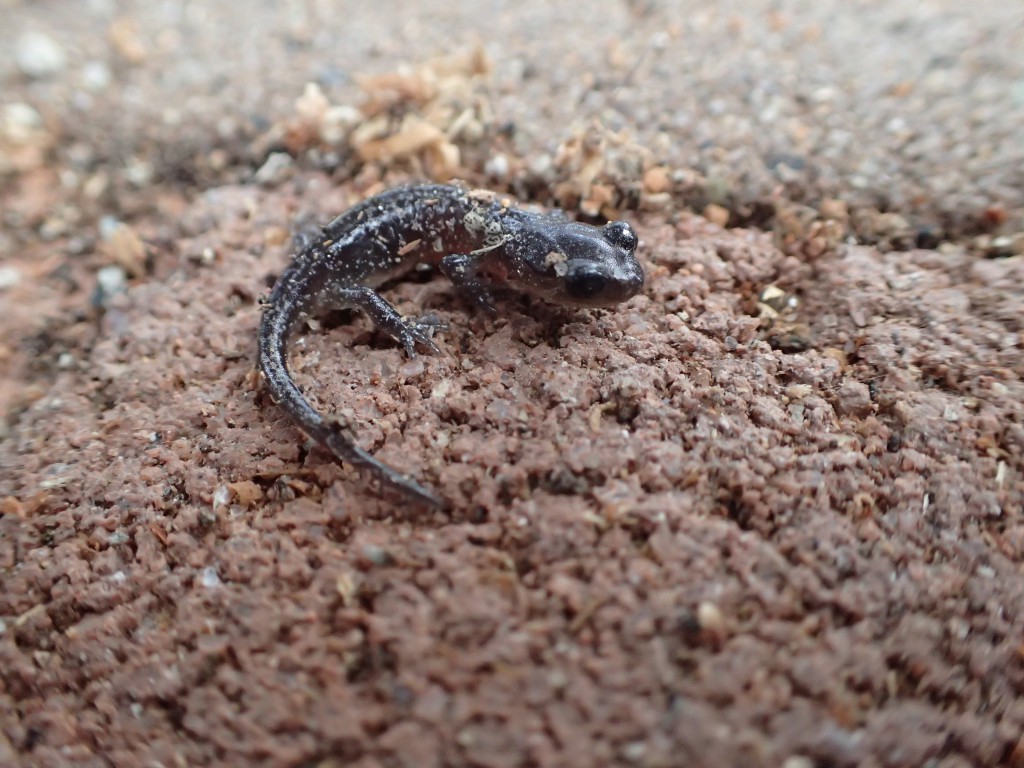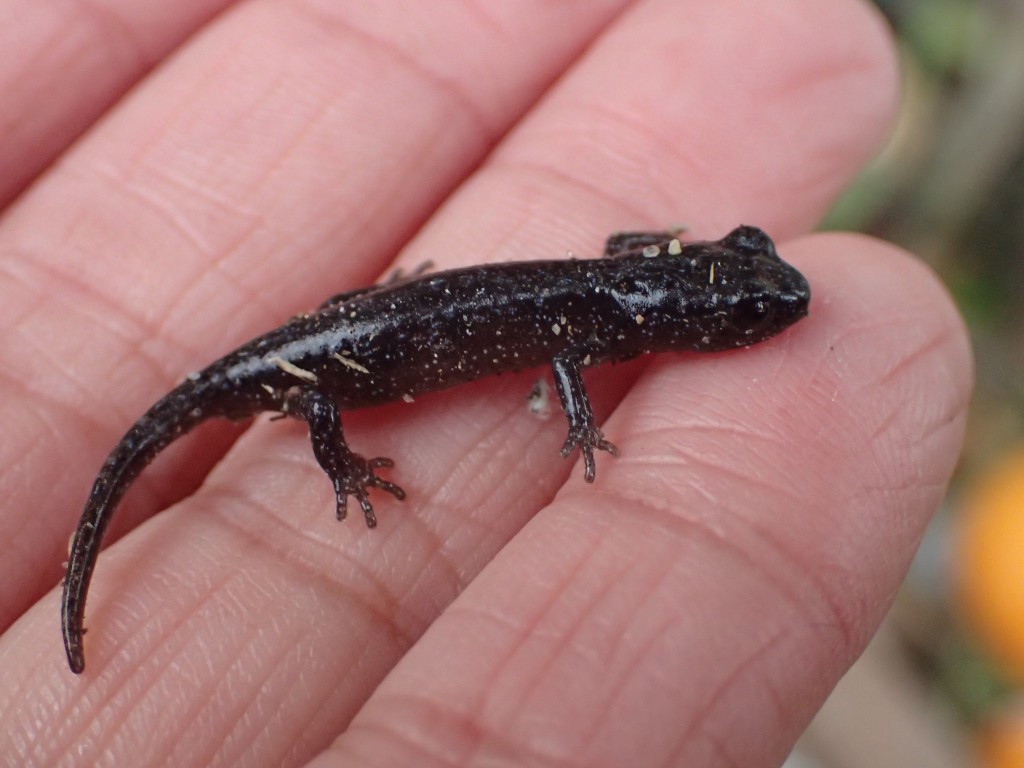Thursday is the day that our trash and recycling/green waste bins get emptied. This afternoon I was moving my green waste bin out to the curb and discovered three little creatures living under it. Two of the three guys were the same, and the third was something different. Fortunately none of them had been injured when I rolled the bin out of its spot next to the fence. The two little guys stayed put when I ran inside to grab my camera, but when I came out the largest guy had disappeared. I found it curled up next to the inside edge of one of the wheels on the bin and was able to coax it out for a few pictures.
A bit of research on the mighty Interwebs leads me to conclude that the larger of my new damp friends is a California slender salamander, Batrachoseps attenuatus. It certainly is slender, isn’t it?

3 February 2016
© Allison J. Gong
If it weren’t for the tiny legs, at first glance this guy would look like a snake. Here’s a close-up of its front end (and the palm of my hand):

3 February 2016
© Allison J. Gong
All told, the slender salamander was about 15 cm long. It fit very nicely in my hand.
The two other critters were quite small, about 3 cm long, and more typically salamander-shaped. I’m pretty sure they were the same species but juveniles can be difficult to identify. They were dark gray, almost black, with tiny yellow speckles that I thought at first were dust bits. Looking at the photos now I’m pretty sure at least some of them were speckles, though.

3 February 2016
© Allison J. Gong
Cute little guys, aren’t they? Aneides lugubris gets its common name from the fact that it can and does climb on trees. However, they are more commonly seen on the ground. Like all salamanders they must remain moist because they breathe through their skin, so they are found under wood piles or flower pots or other yard structures. Including green waste bins, apparently.
I had to remove these guys’ shelter to the curb, so I gently scooped them up, handling them as little as possible, and transferred them to the flower bed. I hope they’ll be happy and can find shelter there.
I love the serendipity of finding creatures when I didn’t expect to! Especially when they’re creatures I’m not familiar with. Any chance to learn about something new is fine by me!


